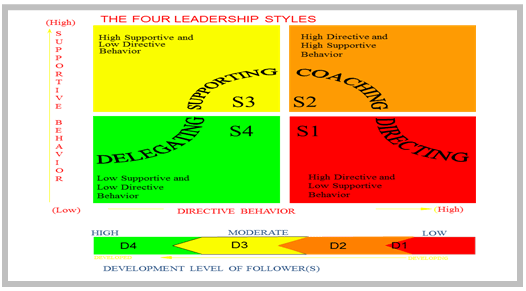Cultural Dimensions of Leadership
April 3, 2025
 Cultural Dimensions of Leadership
Cultural Dimensions of Leadership
Introduction Leadership in organizations is dictated and determined according to a variety of reasons and factors including personality, cultural, and country and regional aspects. Among the various factors, the cultural dimension of leadership is often not highlighted as it is taken as a given. However, with globalization and the advent of tighter integration and interconnectedness,…
 Continuum of Leadership Behaviour
Continuum of Leadership Behaviour
The leadership continuum was originally written in 1958 by Tannenbaum and Schmidt and was later updated in the year 1973. Their work suggests a continuum of possible leadership behavior available to a manager and along which many leadership styles may be placed. The continuum presents a range of action related to the degree of authority…
 The Challenge for Contemporary Leaders is to Restore Trust and Faith in Institutions
The Challenge for Contemporary Leaders is to Restore Trust and Faith in Institutions
Loss of Trust and Faith and the Rise of Populists Public trust and faith in institutions is at an all time low. Starting with the Global Financial Crisis of 2008 in the United States and then the Sovereign Debt Crisis in Europe in 2009, including the Brexit vote in the United Kingdom, and the election…
Leaders are essentially people who know their goals and have the power to influence the thoughts and actions of others to garner their support and cooperation to achieve these goals. In-case of leaders these goals are rarely personal and generally to serve the larger good.
Ever since man was a hunter gatherer and lived in closely knit groups, they had leaders who led the hunting expeditions and took greater risk than the rest of the group members. In turn they were bestowed with larger share of hunting, respect and a higher position in the group. With changing times, how leadership is perceived has also changed, but, it remains an important aspect of social fabric nevertheless.
The initial theories proposed that leaders are born and cannot be created, there are certain distinct characteristics possessed by few men which make them leaders. [Read Great Man Theory and the Trait Theory]. However, for the current discussion we would try and take a closer look at another interesting theory which was proposed called Situational Leadership Theory. This theory says that the same leadership style cannot be practiced in all situations, depending upon the circumstance and environmental context the leadership style also changes. The pioneers of this theory were Kenneth Blanchard and Paul Hersey.
The model encourages the leaders to analyze a particular situation in depth and then lead in the most appropriate manner, suitable for that situation. The three aspects that need could be considered in a situation are:
In the Situational Leadership model, the leadership style has been divided into 4 types:
It is also represented by a diagram most often which is below:

The developmental level of follower is an important indication for a leader to decide the most appropriate leadership style for them:
The above information regarding the style of leadership and the type of followers sure has a correlation to each other which forms the basis of situational leadership. So, a situational leader would try to accommodate his/her leadership style as per the situation and the level of competence and commitment of his/her followers. This information is also an important aspect to consider when senior leaders act as coaches for their subordinates in the organizations.
Your email address will not be published. Required fields are marked *